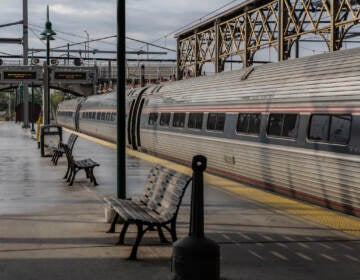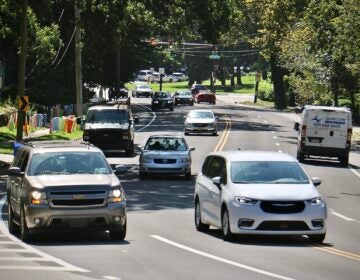As PennDOT prepares for driverless vehicles, other state agencies stall
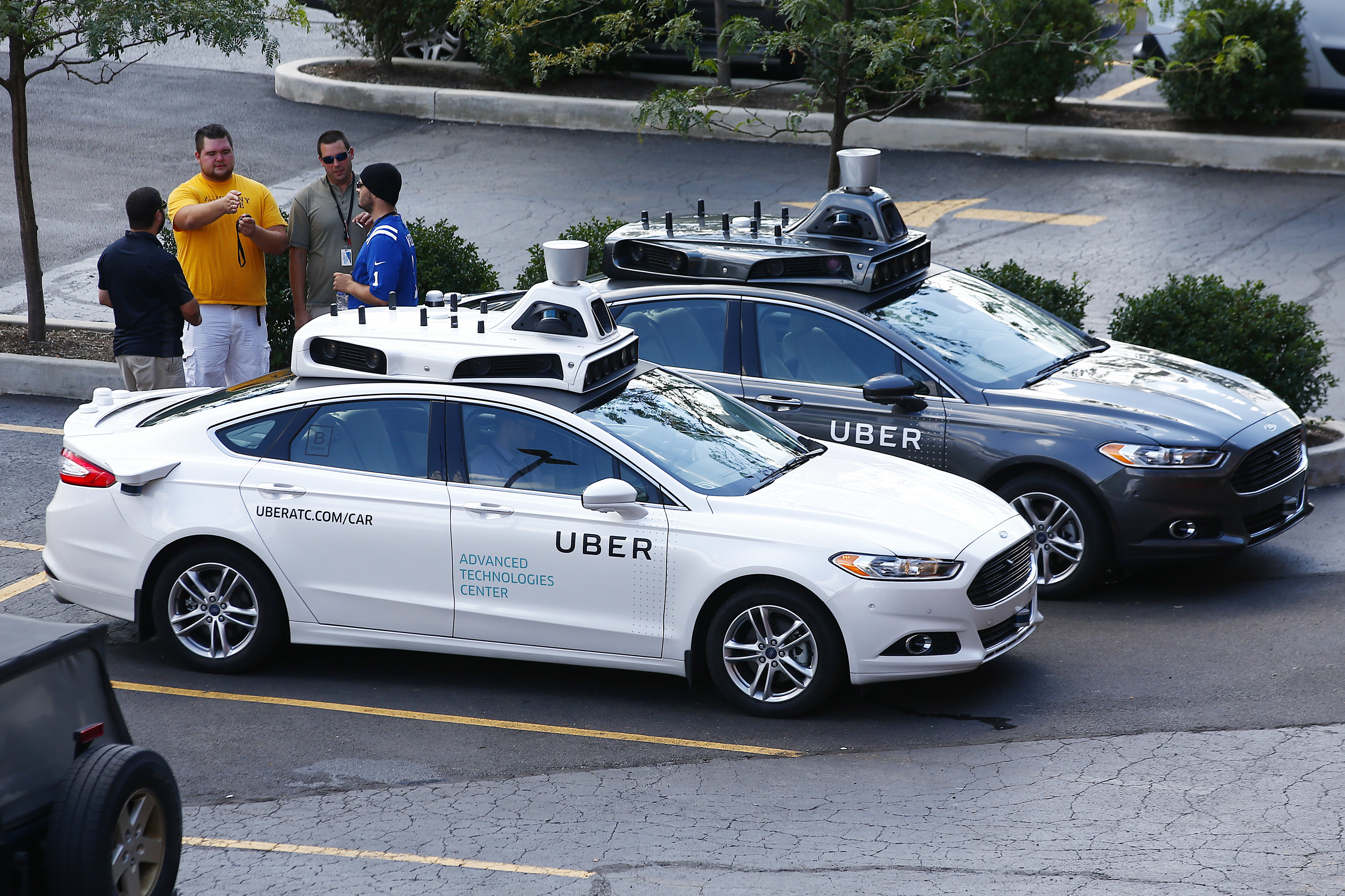
On Wednesday, Uber began publicly testing its autonomous vehicle technology, offering free rides to passengers in Pittsburgh who let a computer take the wheel. It’s a major achievement for Uber, which finished the first lap in the race to driverless cars in the lead.
Regardless of who ultimately wins, the race to fully autonomous vehicles is one Pennsylvania wants to host. To keep the action local, PennDOT created a task force to pave the way to a driverless future. Even as the PennDOT task force speeds towards that rapidly approaching exit, the remainder of the state government—including the agencies that will be tasked with softening the disruptive blow when tens of thousands of high paying low-skill jobs disappear—is asleep at the wheel.
Uber has focused its autonomous vehicle (AV) development efforts in Pittsburgh for a host of reasons, not least of which are the few dozen researchers the company poached from Carnegie Mellon University’s famed robotics lab. Pittsburgh is also the City of Bridges, Home of the Incline, Birthplace of the Pittsburgh Left, and a Place with Crappy Weather: When it comes to the challenges of designing robot drivers, Pittsburgh has it all.
Beyond Pittsburgh’s computer-confusing terrain, Pennsylvania’s regulatory landscape is also unusually conducive to testing AV technology. As written now, Pennsylvania’s motor vehicle statute only says there must be a licensed driver — it doesn’t say that he has to actually do anything, unlike some other states.
Researchers have been able to legally test driverless cars on Pennsylvania’s highways and byways for years while other states have had to pass new laws specifically to allow AV testing. Often, nervous lawmakers elsewhere have limited such experiments to closed roads or placed other restrictions. In California, lawmakers passed a new law in 2015 that made AV testing harder, which helped push the industry to Pittsburgh.
As AV technology approaches the point of truly driverless cars—no steering wheel or pedals for a human driver to sit behind—Pennsylvania will need to update its laws to allow for that next developmental stage, and to comply with new federal guidelines on driverless cars issued Tuesday.
Today, PennDOT’s new task force is doing just that: crafting a set of fast-track rules pursuant to still-pending legislation in the General Assembly to allow fully driverless car trials on Pennsylvania highways. The Autonomous Vehicles Testing Policy Task Force strives to balance the emerging industry’s experimental needs with driver safety, while looking down the road to a future when autonomous vehicles become as common as cell phones and the ways that will change mobility.
The Task Force includes representatives from PennDOT, Dept. of Insurance, Dept. of Community & Economic Development, State Police, and Turnpike Commission to represent the Commonwealth’s interests in safety and economic development. Industry is represented by Uber, General Motors, the American Trucking Association, and the Society of Automotive Engineers. The Task Force is rounded out by Pittsburgh Councilman Dan Gilman, Dr. Raj Rajkumar from Carnegie Mellon, Dr. Erick Guerra from Penn, and representatives from AAA and the Federal Highway Administration.
“Everyone is working together on different aspects of [AV],” says Guerra, an assistant professor at PennDesign’s urban planning program. The idea is to come up with guidelines that will keep Pennsylvania at the technological forefront without sacrificing safety completely, while keeping an eye on how AV will affect the way we plan our roads and cities. It’s an unusually collaborative approach to lawmaking, which regularly defaults to contention.
Safety is a paramount concern. “There will be crashes,” Rajkumar says, frankly. Rajkumar, a pioneer of AV technology at Carnegie Mellon’s robotics lab, is helping the Task Force balance the need for real world testing with keeping the public safe. Two Tesla drivers have been killed while using on the semi-autonomous Autopilot function, and Google’s self-driving cars have been involved in 17 over the last few years, although the tech giant points out that, per mile traveled, it’s self-driving cars crash less frequently than man operated vehicles.
Safety is AV technology’s biggest selling point. Over 90 percent of car crashes involved human error, led by intoxication, speeding, and distraction. In 2015, there were 127,127 crashes in Pennsylvania, resulting in 82,000 injuries and 1,200 deaths. PennDOT estimates that those crashes cost a total economic loss of $14.1 billion, or $1,103 for every man, woman and child in the state.
The Task Force allows the AV bill working its way through Harrisburg to skip the normal, lengthy rulemaking process, which would be far too slow to keep up with this rapidly evolving technology. “We’re not using the regulatory process,” says PennDOT Policy Director and Task Force Co-Chair Roger Cohen. “It’s slow, cumbersome and rigid. It provides neither the pace nor the responsiveness, flexibility, [and] nimbleness of being able to respond to the emerging, developing needs of the very innovative sector our economy demands of us.”
The Task Force is working with transportation committee staffers in both the Pennsylvania House and Senate to prepare matching amendments to a pair of bills working through the respective legislative bodies, says Nolan Ritchie, a legislative aide to Senate Transportation Committee Chair John Rafferty (R-44). The Task Force will issue guidelines after the legislation is passed. The idea is to develop both the statutory and regulatory sides of AV testing policy in tandem, quickly and seamlessly. The bills have bipartisan support, and heavy backing from Allegheny County’s delegation.
But time’s ticking away: The General Assembly’s Fall session ends in November. “To… get it across the finish line and to the Governor’s desk in the limited days, it might be very hard to achieve,” said Ritchie. Still, Ritchie said he was hopeful nonetheless, and—worst case scenario—the legislation would be reintroduced immediately once the General Assembly returned to work in February.
But the legislative calendar isn’t the only deadline looming. Even if AV technology isn’t developed in Pennsylvania, it’ll be developed elsewhere and enter our daily lives. And when it does, will Pennsylvania be ready? The Autonomous Vehicles Testing Policy Task Force aims to have the Commonwealth’s driving and insurance laws updated in time, but the ripple effects of autonomous vehicles will be felt beyond the state’s highways. Pennsylvania wants to see local companies win the race to AV, but every race has its losers, too. What about them?
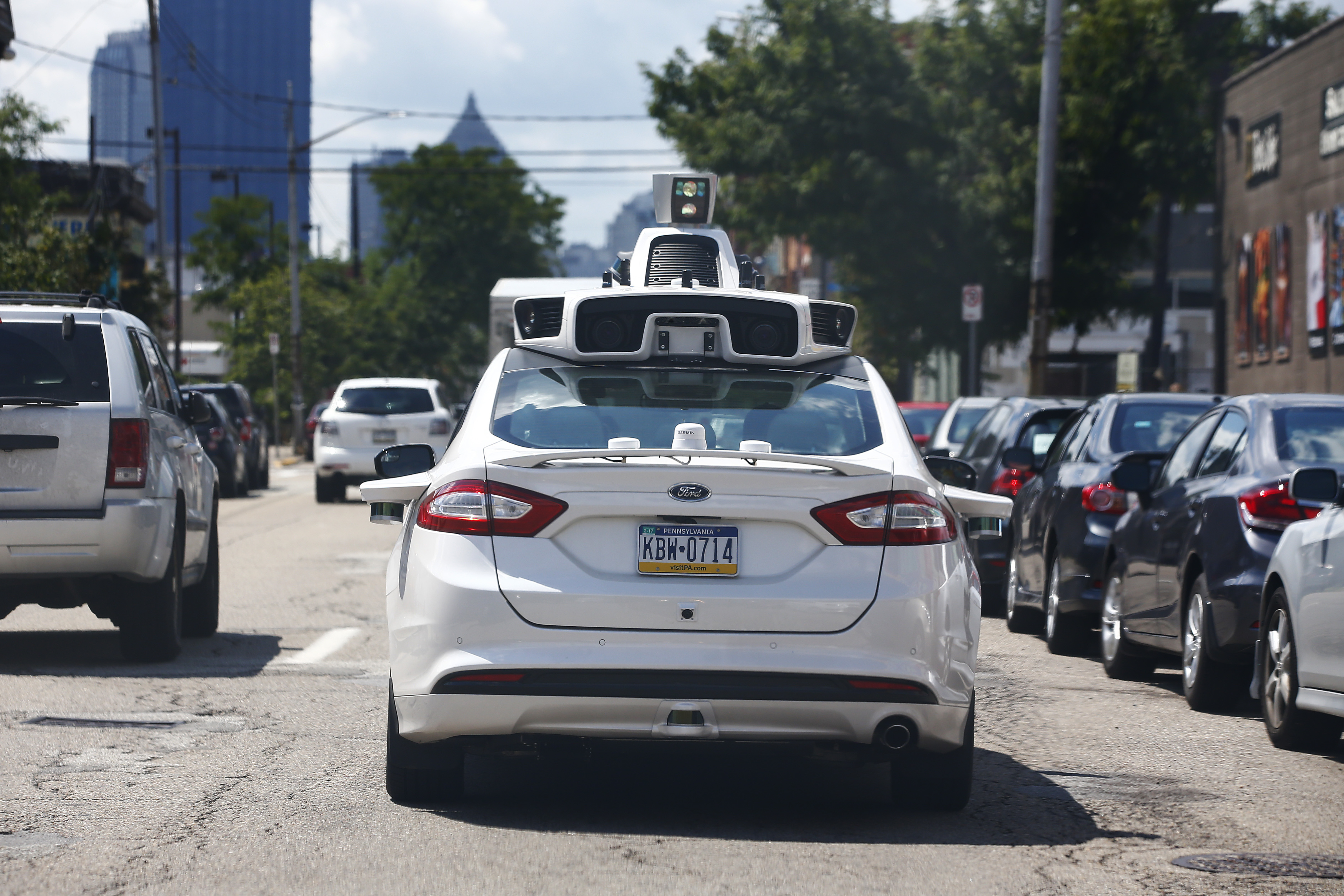
DRIVING OFF AN EMPLOYMENT CLIFF
Driverless cars have been promised for decades — specialized radios strung along expressways were supposed to take the driving out of trips down to Florida, perhaps to Disney World’s Tomorrowland, well before the invention of the microchip — but technology is finally catching up with our imagination.
The technology will arrive before society is ready to accept it. ”It’s not clear that citizens will be comfortable with the fact that a semi will be behind you and there’s no driver behind the wheel,” said Dr. Rajkumar. “It’ll take some time for the legal and societal things to fall into place.”
Rajkumar predicts that society will ease into it. Already, that’s happening with Uber’s experiments in Pittsburgh, where the more adventurous, curious, or cheap (it’s free for now) can sign up to be human guinea pigs. Uber will likely expand that pilot to other cities as the technology improves and local laws allow—and, given their track record, maybe even if the laws don’t.
Rajkumar suggested that trucking might begin its AV adoption with big rig convoys. “Multiple trucks can be grouped into a convoy and the lead rig in that group would be driven by a human, but trucks behind the lead vehicle could be automated, almost like a train of semis.” The human driver leading the pack could react to events ahead, and set passing drivers’ minds at ease.
For its part, the trucking industry says AV technology will help drivers before it ever hurts them, if it ever hurts them. “I cannot envision not having a driver in the vehicle,“ said Ted Scott, Director of Engineering for the American Trucking Associations (ATA) and representative on the PennDOT task force. Scott said trucking companies are interested in AV for its potential to help recruit more drivers—there’s currently a driver shortage—by making the job less stressful.
Scott listed technologies that would support, rather than replace, a driver: “Adaptive cruise control, emergency braking systems, lane centering, blind spot warning systems, collision warning systems, GPS—all help make that driver’s job easier.”
“Labor is up there in the way of costs,” admitted Scott. “It’s probably in the top three.” Only the cost of the trucks themselves and fuel, depending on gas prices, are more expensive than payroll. The industry currently faces a driver shortage, said Scott, pushing wages even higher as fuel costs have dropped.
Still, Scott doesn’t see robots replacing humans in the cab of a big rig anytime soon. “At this point and for the foreseeable future [autonomous vehicle technology] is all about improving safety and driver satisfaction,” said Scott. “We’re not thinking about the Jetsons.”
“The industry, people in it, basically look a week ahead to fill the next truck up. It’s relatively rare that you can find someone to get out there and say, hell, 20 years from now, we’ll be doing this or that,” said Scott. “Most of us don’t like change, y’know?”
Most taxi companies didn’t like change, either. This summer, Uber bought Otto, a startup autonomous trucking company, for $600 million and 20 percent of the company’s future trucking profits. It’s explicit goal: Do to heavy trucking what it has done to taxis.
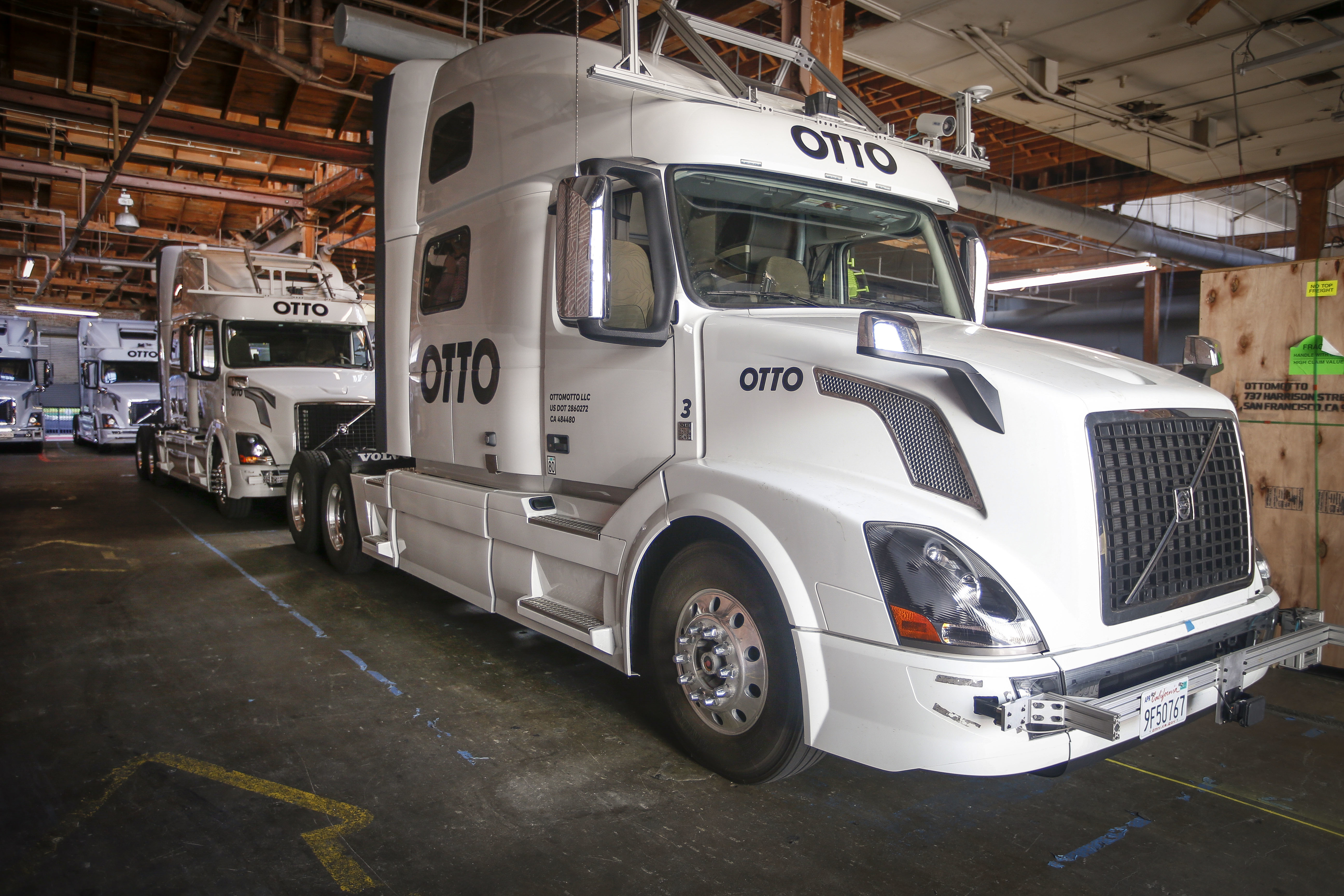
If no one else besides Uber was chasing driverless cars and trucks, Scott’s dismissal might not seem so flippant. But nearly every car manufacturer, and quite a few tech firms, are in hot pursuit: Uber rival Lyft has partnered with Task Force member GM,Tesla already has Autopilot in its cars, Google’s been working on AV for years.
Losing the race to deploy a fleet of fully autonomous vehicles represents an “existential” risk to Uber, the company’s CEO recently told The Economist. Ford promised to mass produce driverless cars by 2021, as has BMW. Nissan has them all beat in lofty goals, claiming it will have driverless cars by 2020.
Rajkumar isn’t as bullish as the carmakers, who have industry analysts and shareholders to impress, saying he expects a widespread rollout of the technology is still 10 years away.
“It is ambitious,” says Cohen when asked about the headline-grabbing promises, “but I’ve learned not to discount some of those predictions.”
“The technology is happening, and happening faster than people anticipated.”
Whether cars can drive themselves in five years’ time or ten, it’s clear where we will see them first, says Guerra: “Anywhere where there is a driver being paid.”
According to Bureau of Labor Statistics data, Pennsylvania is home to 76,960 heavy and tractor-trailer truck drivers. It’s the state’s 11th largest occupation and one that pays better than most. Imagine if everyone working Allentown lost their jobs. Now add in half of Bethlehem’s working population and fire them, too. That’s what Pennsylvania can expect when robots replace truck drivers.
“[AV] will be disruptive in the job market,” says Cohen. “That’s another thing — this isn’t just a transportation concern, but a societal concern. Something our public institutions need to be thinking about.”
Beyond the Task Force agencies, Pennsylvania’s public institutions aren’t preparing for AV’s impending impact on the work force.
“[P]redicting the inevitable loss’ of jobs before knowing the full impact of this technology on passenger cars, let alone, freight trucks is incredibly premature,” said Jeff Sheridan, a spokesman for Governor Tom Wolf, in an email.
“We don’t see the trucking industry all of a sudden having a job loss,” said Sara Goulet, a spokeswoman with the Department of Labor and Industry, which oversees unemployment claims and job training programs.
“Although we’re not at the table of the task force, we feel like we will be when the time is right,” said Goulet. Labor and Industry has not yet examined how AV technology will affect employment and does not currently have any plans to do so.
“Even if cars start to switch in 5 years, it will take longer for the idea to be accepted that trucks carrying tens of thousands of pounds of freight should be driverless,” wrote Sheridan. Nearly everyone interviewed for this article made a similar point: It will take years for the public to feel comfortable letting a robot chauffeur them around.
In the past, society has adopted new technologies relatively quickly. “It’s like the internet, aviation, cell phones,” said Cohen. The Wright Brothers made their first flight in 1903; eleven years later, commercial flight began. The first iPhone was released in 2007, and Google Maps debuted in 2005.
Forrester Research released a report last week estimating that AV technology is just three years away, and that by 2021 a “disruptive tidal wave will begin.”
“Solutions powered by AI/cognitive technology will displace jobs, with the biggest impact felt in transportation, logistics, customer service, and consumer services,” wrote the report’s authors. Forrester expects robots will eliminate 6 percent of U.S. jobs over the next five years.
“These are jobs that are primarily taken by men with a high school education or less—maybe some job training,” said Guerra, the Penn city planning professor. “That’s a group that hasn’t fared well over the last 10 years of economic reconstruction.”
Will these jobs be replaced? That’s tough to say. Classic economic theory suggests that efficiency gains in trucking services will make all sorts of delivered goods—not just finished products, but parts and even raw materials—cheaper. Those beneficiary industries would enjoy higher profits, which could be reinvested in expanded payrolls, and consumers would see savings that they could then spend elsewhere, supporting jobs completely unrelated to the logistics industry. And the companies that successfully develop AV will probably continue to hire engineers and technicians to maintain their technologies and vehicle fleets.
But those jobs won’t be trucking jobs, which pay an annual mean wage of $43,840 in Pennsylvania, or $21 per hour, to anyone who can complete a commercial licensing course and handle long hours on the road.
The Commonwealth has another 5,000 bus drivers, and 7,780 taxi and limo drivers. Uber says it has around 20,000 drivers in Pennsylvania, mostly part-time “independent contractors”; Lyft refused to say how many drivers it employs. Most of those jobs would also disappear once robots sit in the driver seat.
Technological advances always create winners and losers and AV will be no different. Those pains and gains won’t be evenly distributed. Pittsburgh may see enormous growth if the autonomous vehicles kick off a general robotics boom. Already, the average cost per mile of uberX is about $1.50, cheaper than car ownership in some cities. Without drivers to pay, Uber, Lyft or some other high-tech cab company could drop the average cost per mile below 89 cents, the average cost per mile for car ownership in Philadelphia.
But outside urban and suburban settings, you will be less likely to find fleets of autonomous taxis.” Outside dense urban areas, you will still probably have individual car ownership for the most part, because asking a car to come see you will take a long time,” said Carnegie Mellon’s Rajkumar. The lag times between hailing a driverless car and its arrival will make driverless taxis almost as impractical in rural areas as regular taxis are today. Good for getting home from the bar, but that’s about it.
So, the cities will win with AV and—to the extent truckers prefer life in small towns over urban jungles—rural areas will lose. That’s nothing new: American cities and suburbs have rebounded from the Great Recession, but the countryside has continued to decline.
America isn’t a tale of two cities so much as one booming metropolis and one struggling small town. When it arrives, AV technology will bring a spring of hope to places like Pittsburgh and Philadelphia, but it may mean a winter of despair in the space in between. The cities will be ready for driverless cars and trucks, but the rest of the Commonwealth? That’s anyone’s guess.
WHYY is your source for fact-based, in-depth journalism and information. As a nonprofit organization, we rely on financial support from readers like you. Please give today.




